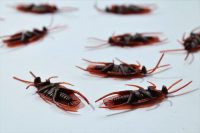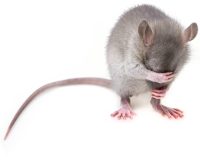Pest Control (PC) companies have become so good at controlling insects, birds, rodents, and other pests that facility oversight of pest management programs often falls by the wayside. This neglect can cause huge issues when pest management plans are dusted off by an auditor or inspector or when there is an unexpected infestation. Here are a few, easy methods to help you improve your Pest Control Program and validate the efforts of your third-party PC provider.
Validating Facility Pest Maps
A common PC program nonconformance involves discrepancies to the Facility Pest Map. The number and placement of internal tin cat traps, fly lights, external bait stations, pheromone traps, etc. can become inaccurate over time. Ask your PC provider to update your map at least annually or when there are major changes. Small changes can be written on the map if they are dated and initialed. When a new version of the map is released, select someone to validate it by physically walking around the facility, checking the placard number and placement of the traps to the map, and making note of any discrepancies.

It’s also a good idea to periodically walk the map throughout the year to ensure that these devices haven’t been damaged. We all know how much forklifts love to crush tin cats, and these traps always seem to get moved around (used to prop open door or knocked out of the way). Different sections could be added to a monthly GMP internal audit to ensure the entire facility and surrounding grounds are covered.
Analyze Service Reports and Trends
It’s amazing how often Pest Control Service Reports are generated and fall into the black hole that is the Pest Control book. Sometimes they are signed by a facility representative, but how often is that person paying attention to the report’s contents to really understand the facility’s vulnerabilities? Many PC providers include observations on conditions that could lead to a pest control issue, suggestions for corrective actions, and other valuable advice for improvement. How often are these words heeded? Often pest control nonconformances discovered in audits and inspections were previously identified by a PC provider. Someone at the facility should be periodically analyzing these service reports to extract this information and act upon any necessary corrective actions. The designated employee can set themselves a calendar reminder to perform this task on a monthly or quarterly basis, remembering to document any corrective actions.
In addition to service reports, many PC providers also provide trending information, which summarizes pest activity over time. Many facilities don’t understand how valuable this information can be. For example, looking at rodent activity (gnaw marks on the bait) of your external bait stations can help identify the locations in your grounds with the most rodent activity. Some rodent activity is expected, but if it’s excessive, there could be a root cause that can be improved. For example, there may be a harborage point or perhaps the grass in the back field should be mowed more frequently in the summer or you may identify areas where additional bait stations are needed.
Leveraging Pest Control Provider Expertise
Many PC providers have entomologists and other pest experts on staff that can conduct an initial vulnerability assessment, which is normally revised annually, to customize the PC program and better protect the facility. These individuals can also be utilized to troubleshoot infestations. Once the type of pest is identified, specific corrective actions can be implemented to eradicate the infestation and preventive actions carried out to prevent a reoccurrence. For example, if birds are a problem around the shipping docks, nets might be used to reduce access to the rafters for nesting birds, or random sirens might be used to scare away migratory birds. For insect infestations, different chemicals (and the application of those chemicals) might be used to maximize remediation.

At a minimum, PC providers should be providing you with a PC book which contains: a current facility map, regular service reports, current licenses for all PC technicians, and the Safety Data Sheets for all chemicals that might be used inside your facility.
Better Utilize the Pest Sighting Log
All PC programs use a Sighting Log in which any pest observations made between PC technician visits can be identified and acted upon. Too often, this log is hidden in the PC book and only used by a designated facility representative. There might be an understanding that sightings observed by other employees are reported to QA, so they can log the sighting. Sometimes this procedure works, but it’s often disrupted and the PC technician doesn’t receive this valuable information. How many issues could be prevented by identifying the problem early?
A solution is to post a copy of the Pest Sighting Log in the employee breakroom and direct the PC technician to check it during services. Train all employees of the purpose and location of this log, and empower them to report any issues. Employees have a vested interest in preventing pest infestations in their workplace, so you might be surprised how successful this simple change can be.
Pest Control Program Innovations
PC programs haven’t changed much in the last few decades. PC providers use technicians to make regularly scheduled visits to maintain pest control devices and apply chemicals when needed. For large facilities, this can be an arduous practice involving hours or even days of work. In the past few years, there have been significant efforts to automize these efforts, allowing remote monitoring of PC devices. Most of the larger PC providers have been working towards this technology and a few now these devices commercially available.
There are some clear benefits to remote monitoring. It gives PC technicians more time to investigate potential issues instead of checking empty traps. Also, remote activity notifications can lead to earlier action, which can prevent mild issues from turning into full-blown infestations. These devices can also be used in hard-to-reach places, such as a narrow void in the ceiling. There are still some concerns with this technology; it’s much more expensive than traditional devices and an automated system could lead to complacency.
While we wait for the technology to become perfected, there are many small changes that can make immediate improvements to your PC program. Validate your program to better understand vulnerabilities, analyze service reports and trends to identify emerging issues, and leverage the resources (pest experts and internal employees) already available to maximize efforts and strengthen your PC program.










